Polonium APT Group: Uncovering New Elements
The Polonium APT group activity was first detected by Microsoft in June 2022. The group is based in Lebanon and exclusively attacks Israeli companies.
The group takes its name from chemical elements in the periodic table:
“Polonium is a chalcogen. A rare and highly radioactive metal with no stable isotopes.”
At the beginning of October 2022, ESET published comprehensive research about the threat group, which included over a hundred hashes of malicious files. Of those files, 13 samples were found in public malware repositories that could be further analyzed.
During the analysis of the public samples Deep Instinct’s threat research team discovered three additional samples from the Polonium arsenal that were not in the original files disclosed.
Deep Instinct discovered that Polonium is using small components to make investigation more difficult, as well as a multi-step attack flow to make it harder to detect. The samples found by the Deep Instinct Threat Research reveal additional components and alternatives to the original Polonium attack tools. We outline the new methods below.
#1: Additional MegaCreep Loader:
In ESET’s report, they detail a MegaCreep loader (md5: 287007b3b0c0762f79e3b8a1cf2cef86) that calls “MainZero,” an external component file that, according to ESET, contains the main code of the MegaCreep backdoor.

The “new” file discovered by Deep Instinct (md5: 19fe1fd29122a5092f7b680e5762fc19) is most likely another loader for MegaCreep. The main difference between the two is that the new loader found doesn’t have functionality by itself to create a service for persistence.
However, thanks to the “End-user Sightings” feature in VirusTotal, we can see that the version without the service has an auto-start registry key persistence named “MicrosoftMegUpdate.”

The paths where the file has been observed on disk are in Users AppData subfolders:

To visualize the connections between the components we created a Maltego graph:
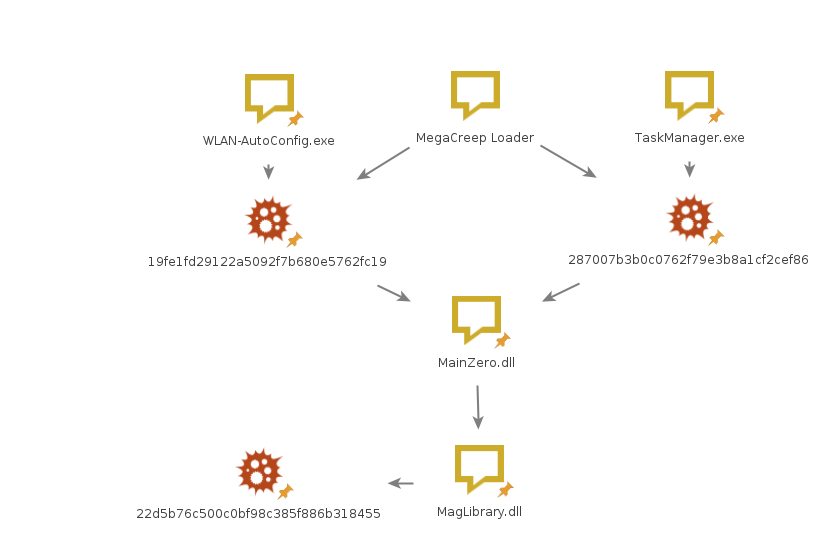
Since “MainZero” is not publicly available, this graph could be missing additional components.
There is also a possibility that a few different versions of MainZero exist.
#2: Additional files of possible new “Creepy” malware:
While hunting for additional files, Deep Instinct identified two additional files used by Polonium.
Those two files, along with the MegaCreep loader we mentioned earlier, were uploaded on the same day, seconds apart, from Israel, using Sysinternals:

This most likely shows that someone was doing initial triage on infected systems.
The additional files are also written in .NET, as is most Polonium malware. Moreover, the files appeared in the same machine as the “MegaCreep” loader we mentioned earlier:
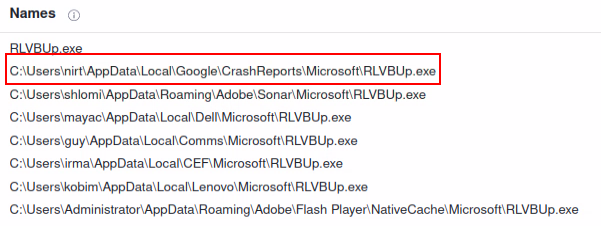
It’s interesting to note that although Polonium reuses the same file on multiple computers, they randomize the paths where they run the malware from, as can be seen in figure 5. However, it always seems to be in some sub-folder under “AppData.”
Both files also use the “Microsoft.VisualBasic.CompilerServices” library and import external components named ClassVB.dll or ClassVB2.dll. This could indicate that they used a VisualBasic component and not just C#.
The ClassVB DLLs are also not publicly available, therefore, the exact functionality is unknown. They might be a variant of “MegaCreep” or a possible previously unidentified “VBCreep” backdoor.
#3: RLVB.exe:
The code of this file is very short; it is a loader for the main functionality which resides in “ClassVB.dll.”
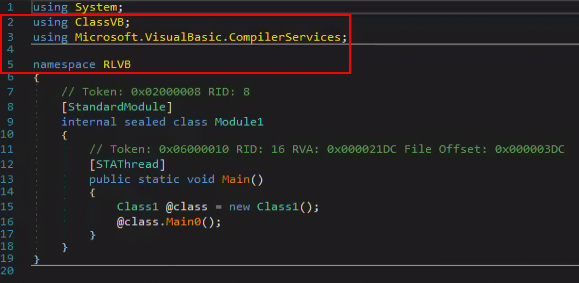
This file also has an auto-start registry key, but under “HKCU\SOFTWARE\Microsoft\Windows\CurrentVersion\Run\CLVBUpdate”
RLVBUp.exe
This file also uses VisualBasic and imports an external file with a similar name to the one in “RLVB.exe.”
An auto-start registry key under “HKCU\SOFTWARE\Microsoft\Windows\CurrentVersion\Run\CLVB11Update” exists here as well.
This file imports “PRLib.dll” which is mentioned in ESET research as part of “MegaCreep.”
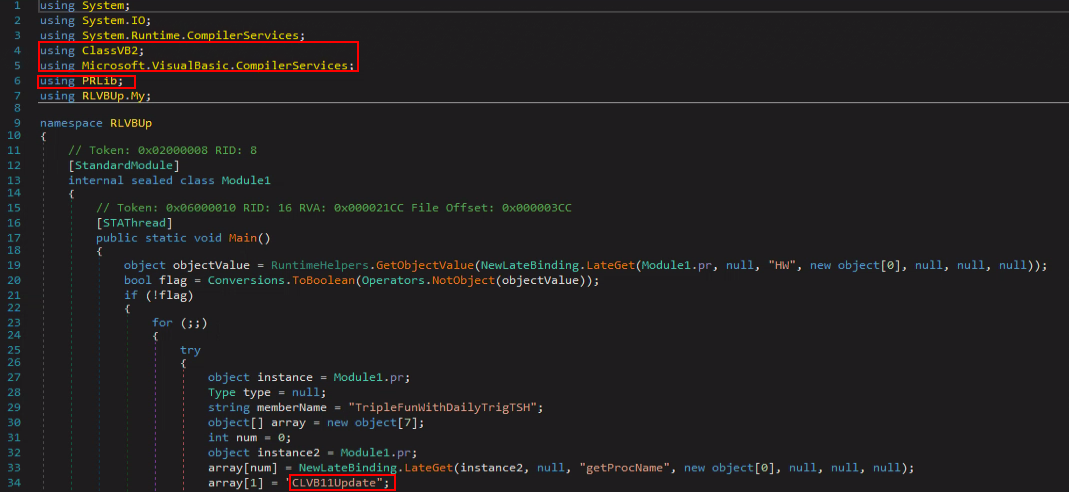
RLVBUp reads/writes data from two external files named “WindMin.dll” and “UnInstall.dll:”
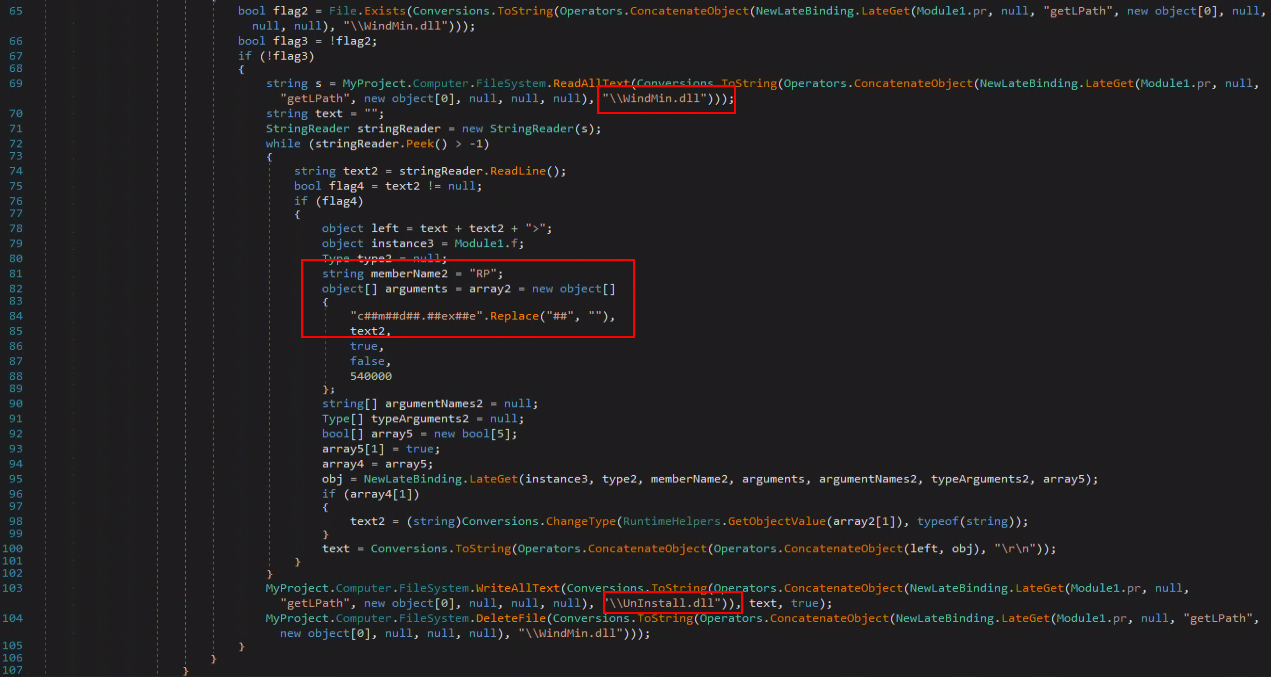
The replace function with “##” is similar to the one in “MegaCreep.”
Most of the external libraries are custom and not publicly available. Therefore, their functionality is not fully uncovered.
Since “RLVBUp” uses “PRLib,” “RLVBUp” might be a module related to “MegaCreep” or a shared module among different Polonium backdoors.
To visualize all the currently known connections we made another Maltego graph:
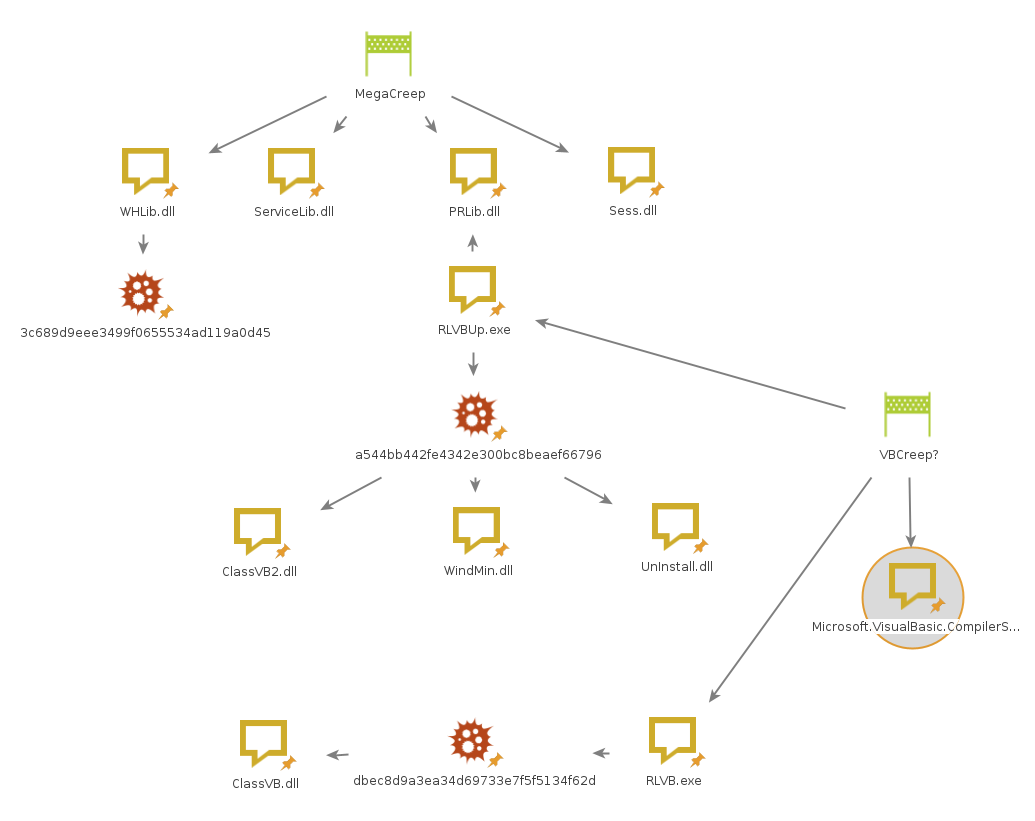
Conclusion
Polonium was uncovered only recently and is focused on attacking Israeli companies exclusively.
Mapping all the known components for their attack tools will help security teams identify similar activity and may lead to uncovering the missing puzzle parts.
IOC
| Filename | MD5 Hash |
|---|---|
TaskManager.exe | 19fe1fd29122a5092f7b680e5762fc19 |
RLVB.exe | dbec8d9a3ea34d69733e7f5f5134f62d |
RLVBUp.exe | a544bb442fe4342e300bc8beaef66796 |





